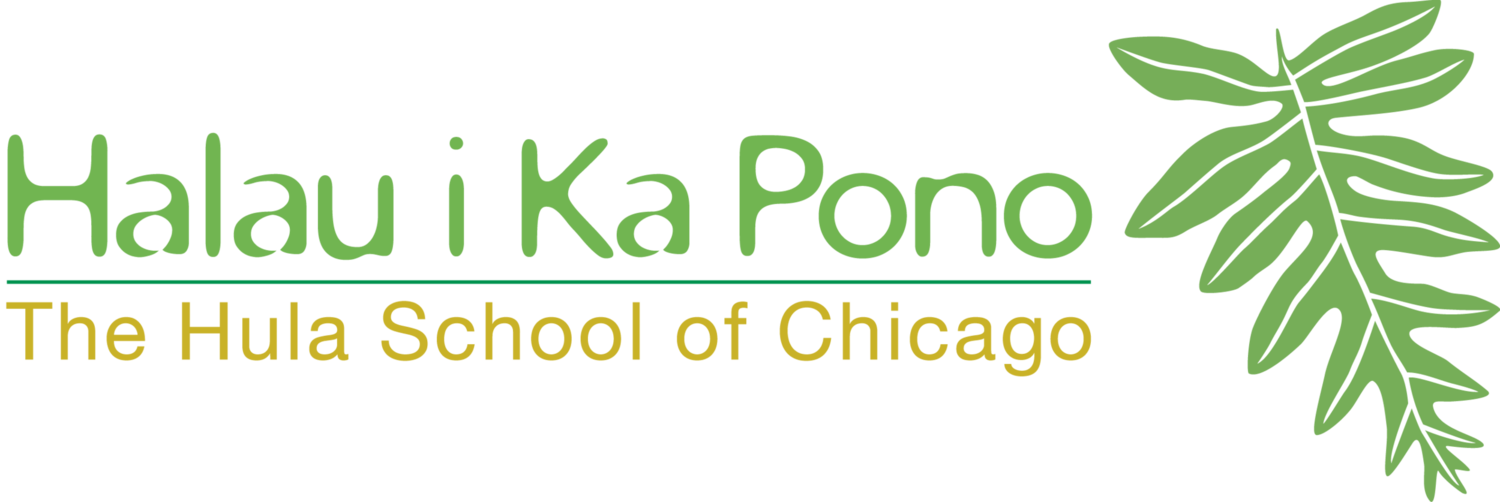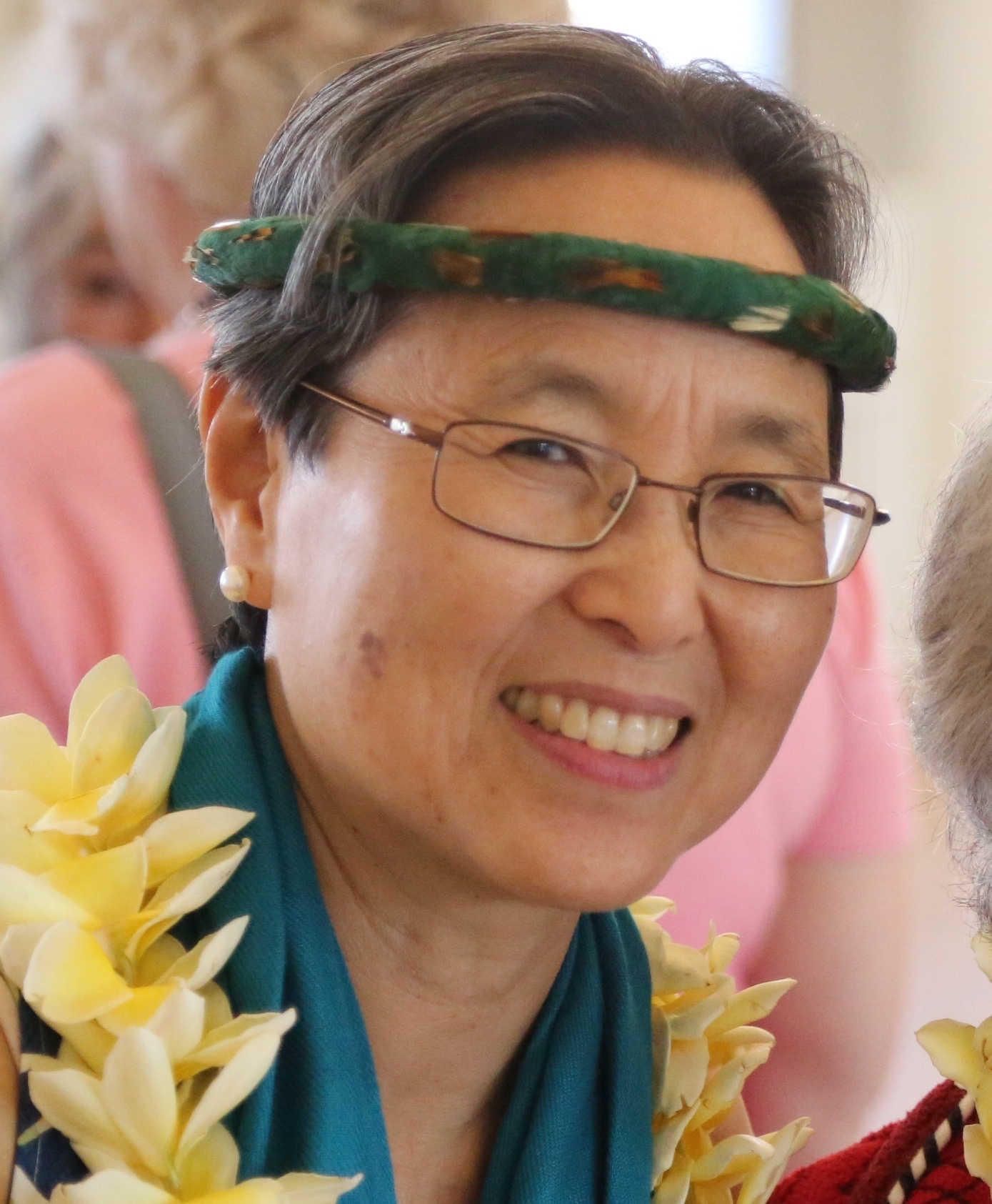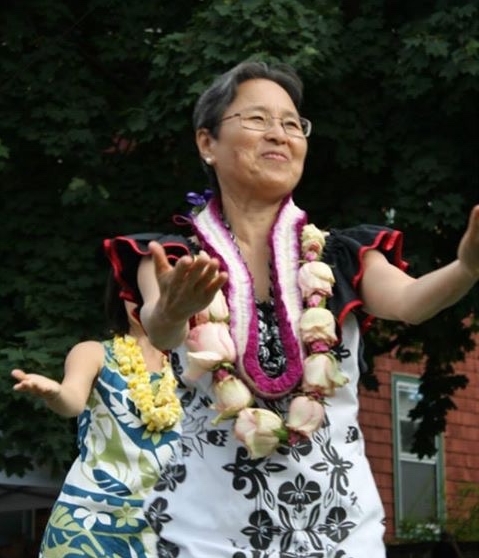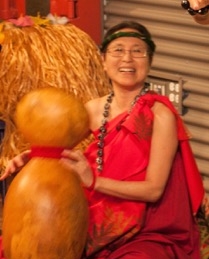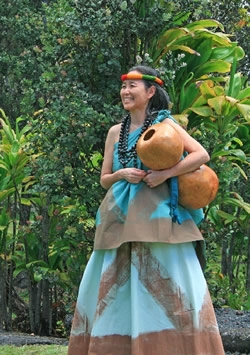June Yoshiko Kaililani Ryushin Tanoue, MPH Kumu Hula, Roshi
Kumu June was born in Laupahoehoe on the Hamakua (Breath of the Ancestors) Coast on Hawaii Island. She began hula classes at age 6 through 8 with Louise Beamer and then danced off and on with other teachers like George Naope and Newton Hitchcock. She began studying seriously in 1988 with Kumu Hula Michael Pili Pang in his Halau Hula Ka No’eau (HHKN) in Waimea.
That began a wonderful journey of learning hula and becoming part of a halau. Highlights of those years:
• The 1989 King Kamehameha Hula Competition. HHKN took third place in Hula Kahiko for Kalalea, a hula noho and hula ‘uli ‘uli (feather gourd) for Queen Emma. This was the first of many awards for the halau.
• Performance at Symphony Space and the Museum of Natural History in NYC
• Collaboration with Pittsburgh-based modern dance company Dance Alloy on ‘Ike: Body of Knowledge, based on the first 125 lines of the Kumulipo. Performed at the Hawai'i Preparatory Academy's Gates Auditorium in Waimea and at the Byham Theatre in Pittsburgh.
Jane Vranish, a dance critic then for the Pittsburgh Post-Gazette, said this about ‘Ike in her review of the Byham performance:
…It wasn’t just the Alloy singing and doing the hula or the Halau embracing modern dance that was so intriguing. It was the respect for an ancient tradition and transporting it to the present with its spiritual dignity still intact. Maybe that was the voyage that was intimated, and we were all taken for a beautiful and memorable ride.
We also presented, a section on traditional hula entitled Pa Ka Na’au: To Feel Within. The old Hawaiians believed that all thoughts and actions of Hawaiians generated from the guts, the na’au. Vranish said this about that section:
Choreographer Michael Pili Pang and his ensemble of 11 women brought “Pa Ka Na’au,” a watercolor array of hulas and chants that depicted such things as a greeting, a walk in the rain and an apology. This was as pure as folk-art gets, whether it be an Appalachian quilt or an Oklahoma fiddling contest. …But one particular song transition involved overlapping melodies, as complex as any Charles Ives piece. And the artistry involved in conveying the rich mix of emotions involved a subtle touch as intricate as homespun lace.
Kumu June went through traditional ʻuniki ritual and graduated as ‘Olapa (Dancer) in 1994, ‘Olapa/Ho’opa’a (Dancer/Keeper of the Chants) in 1996 and Kumu Hula (Master Teacher) in June 2000.
She is also a co-founder of the Zen Life & Meditation Center, Chicago with her husband Roshi Robert Joshin Althouse and was fully empowered as a Zen priest and Roshi (old teacher) in the White Plum Lineage in 2014.
She spent 33 years working with nonprofit organizations. Nearly 25 years were with food banks in Oregon, Hawaii and Chicago. She also worked in grants administration with USA for Africa and the Hawaii Community Foundation.
Zen Meditation
Meditation is a wonderful way to cultivate mindful awareness and deepen your spiritual practice - whatever that may be. Our minds can be very busy. Meditation helps you work with your mind skillfully. Itʻs not about stopping thinking. Rather it’s a way of being with yourself and seeing that when we regularly pause and consciously breathe, we actually think clearer and are less reactive. Meditation is a practice that builds courage and opens the heart. In the process, you will connect and open to your own wisdom and the wisdom of Hula.
If you are interested in learning how to meditate, The Zen Life and Meditation Center (the Halau’s sister organization) has a wonderful Foundations of Mindfulness Series of classes. You learn how to live a Zen-inspired life of openness, empathy and clarity based on a foundation of mindfulness meditation. That translates well to living a hula-inspired life of grace, strength and aloha.
La’au Lapa’au
La’au Lapa’au is the study of healing through spirituality and native Hawaiian medicinal plants. La’au Lapa’au practitioners were the medical doctors of old Hawaii. June studied for five years with master La’au Lapa’au practitioner, Papa Henry Allen Auwae. Papa Auwae always said that healing was 80% spiritual and 20% the plants.
Papa Auwae had five expectations of his students, along with the practice of pono, lokahi, discernment and forgiveness. Today, all of these values are important to practice in daily life for anyone who seriously studies hula with Kumu June.
These five expectations are:
• Ho’olohe – to listen
• Ho’omakaukau – to be prepared
• Ho’omaika’i/akahai – to respect all
• Ho’olauna i ka mea maika’i – to sacrifice
• Ho’omanawanui – to be patient
